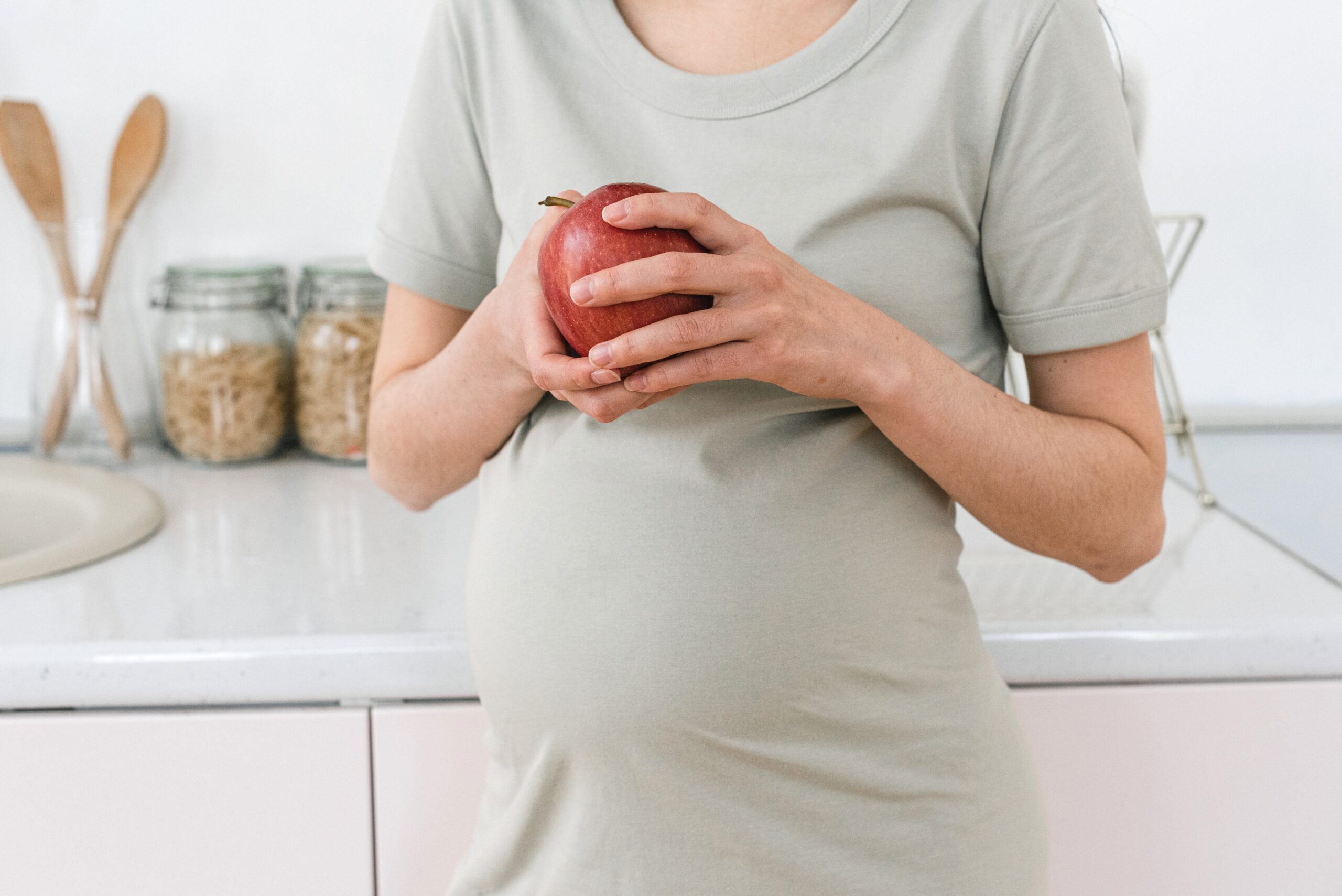Gestational Diabetes Symptoms: What Are the Signs?
Diabetes at any time in life is scary. If you’re pregnant and focused on being as healthy as possible, being told you have “diabetes” is even more frightening.
What does it mean to have diabetes in pregnancy—for you and your developing child? Is this problem, affecting up to 10 percent of all pregnancies, dangerous for your baby?
Gestational diabetes mellitus (GDM) shares similarities with other forms of diabetes, including type 1 and type 2 diabetes. It is described by experts as any degree of glucose intolerance with onset or first recognition during pregnancy.
Many women who develop gestational diabetes never had issues with high blood sugar before pregnancy. However, some may have had blood sugar issues without knowing it. This is because mild diabetes has few symptoms. It’s only with moderate or severe diabetes that most signs of the disorder develop.
Monitoring for gestational diabetes is a routine part of prenatal care, but are there signs and symptoms you could be looking out for? Are there things you could do to decrease your chances of developing it?
This guide will go over the most common symptoms of gestational diabetes, its risk factors, complications, and things you can do to prevent it. It will explain how gestational diabetes is diagnosed and what to do if you develop it.
Signs & symptoms of gestational diabetes
If you develop gestational diabetes, you will want to begin monitoring and treating it right away to prevent its negative consequences.
Most individuals with mild diabetes have few, if any, symptoms, so knowing what to look out for could help you and your clinician be aware of issues as soon as possible:
- Frequent urination. With rising blood sugar, your kidneys must work overtime. Sugar is said to “spill over” into the urine because there is too much of it in the bloodstream for the kidneys to reabsorb. Whenever something like sugar is spilled into the urine, water needs to go with it. This results in needing to urinate more often.
- Urinating larger volumes. In addition to frequent urination, women with GDM often notice they are urinating larger volumes of fluid. This is because blood sugar or glucose cannot leave your urinary tract without plenty of water. Urinary volumes naturally increase as your kidneys flush both glucose and water out of the body.
- Feeling especially thirsty. Those with untreated diabetes are often dehydrated and, thus, feel thirsty. Because your kidneys are eliminating glucose and water, you need to drink more to make up for the losses.
- Feeling hungry. The energy you need to function daily depends on the carbohydrates and sugars you eat. When you have gestational diabetes, you don’t utilize these sugars easily. This can lead to feeling hungry on a deep, cellular level.
- Being frequently tired. Diabetes impairs the way energy, in the form of glucose, enters critical tissues and organs of your body, delivering less “energy.” Being pregnant and having too little energy produces feelings of fatigue.
- Having blurry vision. With frequent fluctuations in blood sugar, the lens of your eye can swell and normalize in rapid succession. Naturally, this leads to the blurriness of your vision. While this symptom is possible, it is uncommon because of the short-term nature of gestational diabetes.
- Having infections or being unable to clear them. People with untreated diabetes have a higher risk of infections of all types. This is because high blood sugar affects the immune system. Among those with gestational diabetes, it may mean more frequent bladder infections or having sores that don’t heal quickly.
Most of these symptoms are a direct result of having untreated diabetes and may disappear once the diabetes is managed. If you have any of these symptoms regularly and are pregnant, you should talk about them with your healthcare provider.
If you already have the diagnosis of diabetes or gestational diabetes, the symptoms may help determine if you are adequately managing your disease. Fortunately, there are home tests (such as home glucose monitoring and urine dipstick testing) you may use along with tests your doctor performs to make sure your blood sugars stay within the normal range.

Healthy mom, healthy baby: Get support from a prenatal dietitian
90% of Zaya Care patients pay $0 for one-on-one counseling with a Registered Dietitan
Gestational diabetes risk factors
There are different risk factors for the various kinds of diabetes. Gestational diabetes and type 2 diabetes have similar risk factors for a good reason—they both involve insulin resistance.
Insulin resistance describes a situation in which you have plenty of insulin to combat higher blood sugars, but it has difficulty assisting in the process of getting sugar into your cells.
Pregnancy is a natural state of insulin resistance even if you don’t have diabetes. If you are prone to insulin resistance for other reasons, being pregnant can tip the scales toward high blood sugar.
Similarly, you are more likely to develop type 2 diabetes later in life if you had gestational diabetes during at least one of your pregnancies.
These are the most well-known risk factors for gestational diabetes:
- Being overweight. Being overweight means having excess fatty (adipose) tissue. Adipose tissue creates hormones and other factors that make the job of insulin more challenging. This problem (insulin resistance) can be reduced simply by losing weight.
- Having a prior pregnancy complicated by gestational diabetes. If you have gestational diabetes during pregnancy, the risk of having it again in subsequent pregnancies increases to about 38%.
- Having a baby weighing over 9 pounds. If you have gestational diabetes, your baby will receive an extra dose of glucose from your bloodstream. This excess sugar enters the baby’s body through the umbilical cord. With so much extra food energy, the baby may be larger than a baby carried in a normal pregnancy. If your baby was larger than 9 pounds in a prior pregnancy, it’s possible that it was exposed to high blood sugars, but testing missed the problem.
- Being an older mom. If you are older, your risk of type 2 diabetes is greater. The same is true for gestational diabetes. The exact mechanism explaining this is unknown. The result is that women over 25 years at the time of pregnancy are more likely to have insulin resistance and gestational diabetes.
- Having a close family member with type 2 diabetes. The mechanism that causes type 2 diabetes and gestational diabetes is the same—insulin resistance. It is a strongly heritable condition. This means that you have a stronger chance of developing either if a close relative has suffered from these conditions.
- Having Polycystic Ovary Syndrome (PCOS). Individuals who have PCOS have insulin resistance as part of their metabolic dysregulation. If you become pregnant with PCOS, the chances of developing gestational diabetes are high, particularly if you are older.
- Being certain ethnicities. Many indigenous persons (with Native American, Alaskan Native, Pacific Islander, or Native Hawaiian heritage) have a higher risk of having type 2 diabetes and gestational diabetes. Latino, Hispanic, and African American individuals have a higher risk of these disorders as well.
Complications of gestational diabetes
If you develop gestational diabetes, there are some complications you need to be aware of that raise the stakes you face when managing the disorder. Women who manage their GDM generally do well; however, untreated high blood sugar in pregnancy can lead to multiple complications:
- Large Infant. If you have GDM, your baby gets too much sugar inside the uterus and may gain too much weight. Many babies who are born after GDM pregnancies weigh more than nine pounds at birth.
- Need for cesarean section. Babies born too large have a greater chance of becoming stuck in the birth canal during labor. In addition, other complications of labor that lead to a need for cesarean section are more common in pregnancies complicated by gestational diabetes.
- Preeclampsia. This is a condition involving protein in the urine and high blood pressure during pregnancy. With these conditions, the infant will have more difficulty getting oxygen and nutrients. This can be harmful to your baby’s health before birth and can lead to preterm birth or stillbirth. You can learn more about the ideal diet for high blood pressure during pregnancy here.
- Neonatal hypoglycemia (low blood sugar after birth). Your baby may have hypoglycemia after birth with GDM because it will be born with too much insulin (from its own pancreas) and a sudden loss of its main blood sugar source (you) at the time of birth.
There is one complication that can occur even when GDM is treated—hypoglycemia (low blood sugar). This is because insulin, which is the most common treatment for GDM besides lifestyle changes, can cause low blood sugar.
This results in hunger, confusion, shakiness, and possibly coma or fetal complications, if it isn’t treated urgently.
>> Find a prenatal nutritionist that can help with gestational diabetes
How to prevent gestational diabetes
While you cannot change some of the risk factors for gestational diabetes, you can do some things to prevent the development of insulin resistance significant enough to cause high blood sugar:
- Maintain a normal body weight before conceiving. If you can, lose weight to normalize your body mass index (BMI) before you get pregnant. You should not try to lose weight during pregnancy but should work with a nutritionist to gain a healthy amount of weight while pregnant.
- Eat a balanced diet. Eating a healthy diet with as little added sugar as possible can reduce your risk. Table sugar raises your blood glucose levels more than foods high in protein, complex carbs (like rice, potatoes, and whole grains), or fats. The Mediterranean diet is commonly recommended for those at risk for diabetes; this is a balanced diet low in added sugars.
- Exercise regularly. Any type of regular exercise can help you metabolize your calories rather than having calories stored as fat. This can help insulin work better and reduce the incidence and complications of type 2 and gestational diabetes.
>> Learn more: How much protein should I eat during pregnancy?
How gestational diabetes is diagnosed
Most women are screened for gestational diabetes from the 24th to 28th week of pregnancy using a test called the one-hour oral glucose tolerance test (OGTT).
During this test, you are given a few ounces of a sweetened beverage to drink. After one hour, your blood sugar is tested. If the level is too high, you may have further testing and could be diagnosed with gestational diabetes, even if you have no signs of the disease.
GDM can be seen earlier in pregnancy if the doctor notices larger-than-normal amounts of sugar in the urine. If found, your healthcare provider may perform GDM screening earlier than 24 weeks of gestation. If you have type 1 or type 2 diabetes, you may not be screened at all but will begin treatment for your preexisting diabetes superimposed on pregnancy.
What happens if you’re diagnosed with gestational diabetes
If you develop gestational diabetes or have preexisting diabetes, you and your baby will be helped by maintaining a healthy diet and monitoring your blood sugars daily.
Regular exercise is also important as long as you remain healthy.
Pay attention to any signs or symptoms of diabetes and follow up as recommended with your healthcare provider.
You may benefit greatly from working with a prenatal nutritionist who can carefully study your current diet. They can also help you determine the best foods to eat while pregnant and plan meals for yourself and your family. They can analyze your blood sugars to make sure you are eating properly.
The primary treatment for gestational diabetes is insulin; however, not all women with GDM require this medication. Your provider and nutritionist can help you adjust insulin dosing when needed so you and your baby remain healthy.
If you are pregnant with gestational diabetes:
- Monitor yourself for signs of high blood sugar. The presence of symptoms or signs of GDM generally means your sugar level is high. If you experience them, you should check your blood sugar and follow your provider’s recommendations.
- See your doctor regularly. You will likely see your healthcare provider more often when you have gestational diabetes to help monitor you and your baby. Close monitoring can help reduce pregnancy complications. Your provider will also prescribe insulin, if you need it, while pregnant with this disorder.
- Eat a healthy diet. Follow your healthcare provider’s recommendations regarding the best diet for gestational diabetes. Some meal ideas compiled by Zaya Care’s experts include:
- Get regular exercise. Your blood sugar will improve with regular exercise. Exercise helps you “burn carbs” by improving your metabolism.
- Monitor your blood sugar routinely. You will most likely need to check your blood sugar several times per day. Alternatively, your doctor may recommend continuous glucose monitoring so you can avoid routine finger pricks.

Healthy mom, healthy baby: Get support from a prenatal dietitian
90% of Zaya Care patients pay $0 for one-on-one counseling with a Registered Dietitan
Diabetes at any time in life is scary. If you’re pregnant and focused on being as healthy as possible, being told you have “diabetes” is even more frightening.
What does it mean to have diabetes in pregnancy—for you and your developing child? Is this problem, affecting up to 10 percent of all pregnancies, dangerous for your baby?
Gestational diabetes mellitus (GDM) shares similarities with other forms of diabetes, including type 1 and type 2 diabetes. It is described by experts as any degree of glucose intolerance with onset or first recognition during pregnancy.
Many women who develop gestational diabetes never had issues with high blood sugar before pregnancy. However, some may have had blood sugar issues without knowing it. This is because mild diabetes has few symptoms. It’s only with moderate or severe diabetes that most signs of the disorder develop.
Monitoring for gestational diabetes is a routine part of prenatal care, but are there signs and symptoms you could be looking out for? Are there things you could do to decrease your chances of developing it?
This guide will go over the most common symptoms of gestational diabetes, its risk factors, complications, and things you can do to prevent it. It will explain how gestational diabetes is diagnosed and what to do if you develop it.
Signs & symptoms of gestational diabetes
If you develop gestational diabetes, you will want to begin monitoring and treating it right away to prevent its negative consequences.
Most individuals with mild diabetes have few, if any, symptoms, so knowing what to look out for could help you and your clinician be aware of issues as soon as possible:
- Frequent urination. With rising blood sugar, your kidneys must work overtime. Sugar is said to “spill over” into the urine because there is too much of it in the bloodstream for the kidneys to reabsorb. Whenever something like sugar is spilled into the urine, water needs to go with it. This results in needing to urinate more often.
- Urinating larger volumes. In addition to frequent urination, women with GDM often notice they are urinating larger volumes of fluid. This is because blood sugar or glucose cannot leave your urinary tract without plenty of water. Urinary volumes naturally increase as your kidneys flush both glucose and water out of the body.
- Feeling especially thirsty. Those with untreated diabetes are often dehydrated and, thus, feel thirsty. Because your kidneys are eliminating glucose and water, you need to drink more to make up for the losses.
- Feeling hungry. The energy you need to function daily depends on the carbohydrates and sugars you eat. When you have gestational diabetes, you don’t utilize these sugars easily. This can lead to feeling hungry on a deep, cellular level.
- Being frequently tired. Diabetes impairs the way energy, in the form of glucose, enters critical tissues and organs of your body, delivering less “energy.” Being pregnant and having too little energy produces feelings of fatigue.
- Having blurry vision. With frequent fluctuations in blood sugar, the lens of your eye can swell and normalize in rapid succession. Naturally, this leads to the blurriness of your vision. While this symptom is possible, it is uncommon because of the short-term nature of gestational diabetes.
- Having infections or being unable to clear them. People with untreated diabetes have a higher risk of infections of all types. This is because high blood sugar affects the immune system. Among those with gestational diabetes, it may mean more frequent bladder infections or having sores that don’t heal quickly.
Most of these symptoms are a direct result of having untreated diabetes and may disappear once the diabetes is managed. If you have any of these symptoms regularly and are pregnant, you should talk about them with your healthcare provider.
If you already have the diagnosis of diabetes or gestational diabetes, the symptoms may help determine if you are adequately managing your disease. Fortunately, there are home tests (such as home glucose monitoring and urine dipstick testing) you may use along with tests your doctor performs to make sure your blood sugars stay within the normal range.

Healthy mom, healthy baby: Get support from a prenatal dietitian
90% of Zaya Care patients pay $0 for one-on-one counseling with a Registered Dietitan
Gestational diabetes risk factors
There are different risk factors for the various kinds of diabetes. Gestational diabetes and type 2 diabetes have similar risk factors for a good reason—they both involve insulin resistance.
Insulin resistance describes a situation in which you have plenty of insulin to combat higher blood sugars, but it has difficulty assisting in the process of getting sugar into your cells.
Pregnancy is a natural state of insulin resistance even if you don’t have diabetes. If you are prone to insulin resistance for other reasons, being pregnant can tip the scales toward high blood sugar.
Similarly, you are more likely to develop type 2 diabetes later in life if you had gestational diabetes during at least one of your pregnancies.
These are the most well-known risk factors for gestational diabetes:
- Being overweight. Being overweight means having excess fatty (adipose) tissue. Adipose tissue creates hormones and other factors that make the job of insulin more challenging. This problem (insulin resistance) can be reduced simply by losing weight.
- Having a prior pregnancy complicated by gestational diabetes. If you have gestational diabetes during pregnancy, the risk of having it again in subsequent pregnancies increases to about 38%.
- Having a baby weighing over 9 pounds. If you have gestational diabetes, your baby will receive an extra dose of glucose from your bloodstream. This excess sugar enters the baby’s body through the umbilical cord. With so much extra food energy, the baby may be larger than a baby carried in a normal pregnancy. If your baby was larger than 9 pounds in a prior pregnancy, it’s possible that it was exposed to high blood sugars, but testing missed the problem.
- Being an older mom. If you are older, your risk of type 2 diabetes is greater. The same is true for gestational diabetes. The exact mechanism explaining this is unknown. The result is that women over 25 years at the time of pregnancy are more likely to have insulin resistance and gestational diabetes.
- Having a close family member with type 2 diabetes. The mechanism that causes type 2 diabetes and gestational diabetes is the same—insulin resistance. It is a strongly heritable condition. This means that you have a stronger chance of developing either if a close relative has suffered from these conditions.
- Having Polycystic Ovary Syndrome (PCOS). Individuals who have PCOS have insulin resistance as part of their metabolic dysregulation. If you become pregnant with PCOS, the chances of developing gestational diabetes are high, particularly if you are older.
- Being certain ethnicities. Many indigenous persons (with Native American, Alaskan Native, Pacific Islander, or Native Hawaiian heritage) have a higher risk of having type 2 diabetes and gestational diabetes. Latino, Hispanic, and African American individuals have a higher risk of these disorders as well.
Complications of gestational diabetes
If you develop gestational diabetes, there are some complications you need to be aware of that raise the stakes you face when managing the disorder. Women who manage their GDM generally do well; however, untreated high blood sugar in pregnancy can lead to multiple complications:
- Large Infant. If you have GDM, your baby gets too much sugar inside the uterus and may gain too much weight. Many babies who are born after GDM pregnancies weigh more than nine pounds at birth.
- Need for cesarean section. Babies born too large have a greater chance of becoming stuck in the birth canal during labor. In addition, other complications of labor that lead to a need for cesarean section are more common in pregnancies complicated by gestational diabetes.
- Preeclampsia. This is a condition involving protein in the urine and high blood pressure during pregnancy. With these conditions, the infant will have more difficulty getting oxygen and nutrients. This can be harmful to your baby’s health before birth and can lead to preterm birth or stillbirth. You can learn more about the ideal diet for high blood pressure during pregnancy here.
- Neonatal hypoglycemia (low blood sugar after birth). Your baby may have hypoglycemia after birth with GDM because it will be born with too much insulin (from its own pancreas) and a sudden loss of its main blood sugar source (you) at the time of birth.
There is one complication that can occur even when GDM is treated—hypoglycemia (low blood sugar). This is because insulin, which is the most common treatment for GDM besides lifestyle changes, can cause low blood sugar.
This results in hunger, confusion, shakiness, and possibly coma or fetal complications, if it isn’t treated urgently.
>> Find a prenatal nutritionist that can help with gestational diabetes
How to prevent gestational diabetes
While you cannot change some of the risk factors for gestational diabetes, you can do some things to prevent the development of insulin resistance significant enough to cause high blood sugar:
- Maintain a normal body weight before conceiving. If you can, lose weight to normalize your body mass index (BMI) before you get pregnant. You should not try to lose weight during pregnancy but should work with a nutritionist to gain a healthy amount of weight while pregnant.
- Eat a balanced diet. Eating a healthy diet with as little added sugar as possible can reduce your risk. Table sugar raises your blood glucose levels more than foods high in protein, complex carbs (like rice, potatoes, and whole grains), or fats. The Mediterranean diet is commonly recommended for those at risk for diabetes; this is a balanced diet low in added sugars.
- Exercise regularly. Any type of regular exercise can help you metabolize your calories rather than having calories stored as fat. This can help insulin work better and reduce the incidence and complications of type 2 and gestational diabetes.
>> Learn more: How much protein should I eat during pregnancy?
How gestational diabetes is diagnosed
Most women are screened for gestational diabetes from the 24th to 28th week of pregnancy using a test called the one-hour oral glucose tolerance test (OGTT).
During this test, you are given a few ounces of a sweetened beverage to drink. After one hour, your blood sugar is tested. If the level is too high, you may have further testing and could be diagnosed with gestational diabetes, even if you have no signs of the disease.
GDM can be seen earlier in pregnancy if the doctor notices larger-than-normal amounts of sugar in the urine. If found, your healthcare provider may perform GDM screening earlier than 24 weeks of gestation. If you have type 1 or type 2 diabetes, you may not be screened at all but will begin treatment for your preexisting diabetes superimposed on pregnancy.
What happens if you’re diagnosed with gestational diabetes
If you develop gestational diabetes or have preexisting diabetes, you and your baby will be helped by maintaining a healthy diet and monitoring your blood sugars daily.
Regular exercise is also important as long as you remain healthy.
Pay attention to any signs or symptoms of diabetes and follow up as recommended with your healthcare provider.
You may benefit greatly from working with a prenatal nutritionist who can carefully study your current diet. They can also help you determine the best foods to eat while pregnant and plan meals for yourself and your family. They can analyze your blood sugars to make sure you are eating properly.
The primary treatment for gestational diabetes is insulin; however, not all women with GDM require this medication. Your provider and nutritionist can help you adjust insulin dosing when needed so you and your baby remain healthy.
If you are pregnant with gestational diabetes:
- Monitor yourself for signs of high blood sugar. The presence of symptoms or signs of GDM generally means your sugar level is high. If you experience them, you should check your blood sugar and follow your provider’s recommendations.
- See your doctor regularly. You will likely see your healthcare provider more often when you have gestational diabetes to help monitor you and your baby. Close monitoring can help reduce pregnancy complications. Your provider will also prescribe insulin, if you need it, while pregnant with this disorder.
- Eat a healthy diet. Follow your healthcare provider’s recommendations regarding the best diet for gestational diabetes. Some meal ideas compiled by Zaya Care’s experts include:
- Get regular exercise. Your blood sugar will improve with regular exercise. Exercise helps you “burn carbs” by improving your metabolism.
- Monitor your blood sugar routinely. You will most likely need to check your blood sugar several times per day. Alternatively, your doctor may recommend continuous glucose monitoring so you can avoid routine finger pricks.

Healthy mom, healthy baby: Get support from a prenatal dietitian
90% of Zaya Care patients pay $0 for one-on-one counseling with a Registered Dietitan
















